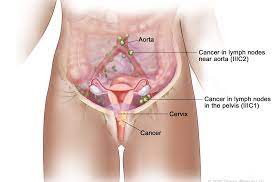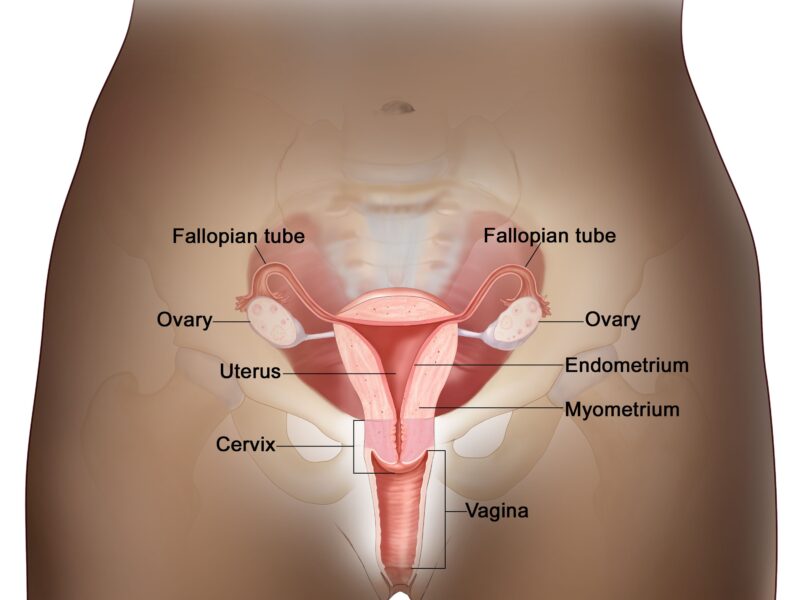Cervical cancer is a type of cancer that occurs in the cells of the cervix, which is the lower part of the uterus that connects to the vagina. Most cervical cancers are caused by persistent infection with high-risk types of human papillomavirus (HPV), a sexually transmitted infection.
Cervical cancer is a significant global health concern, but it is also highly preventable and treatable, especially when detected at an early stage
Causative Factors
- HPV Infection: Persistent infection with high-risk types of HPV, especially HPV16 and HPV18, is the primary cause of cervical cancer.
- Other Risk Factors: These include smoking, a weakened immune system, long-term use of oral contraceptives, multiple full-term pregnancies, and a family history of cervical cancer.
Prevention
- HPV Vaccination: Vaccines, such as Gardasil and Cervarix, protect against certain high-risk HPV types and have proven effective in preventing cervical cancer.
- Regular Pap Smears (Pap Tests): Screening tests can detect abnormal changes in the cervical cells before they become cancerous. Early detection through Pap smears allows for timely intervention.
Signs and Symptoms

- Early-stage cervical cancer may not cause noticeable symptoms.
- As the cancer progresses, symptoms may include abnormal vaginal bleeding (during or after intercourse, between periods, or after menopause), pelvic pain, and increased vaginal discharge.
Diagnostic Tests
- Pap Smear: A Pap smear is a screening test that collects cells from the cervix to detect abnormalities.
- HPV Test: This test checks for the presence of high-risk HPV types.
- Colposcopy: If abnormalities are detected, a colposcopy may be performed, involving a closer examination of the cervix using a magnifying instrument.
- Biopsy: If abnormal cells are found, a biopsy may be done to confirm the presence of cancerous cells.
Staging
- Cervical cancer is staged from 0 to IV, with higher stages indicating more advanced disease.
- Staging helps determine the extent of cancer spread and guides treatment decisions.
Treatment Options
- Surgery: Surgical procedures may include removing the cancerous tissue (cone biopsy), hysterectomy (removal of the uterus), or pelvic exenteration (removal of the uterus, surrounding tissues, and lymph nodes).
- Radiation Therapy: High-energy rays are used to target and kill cancer cells.
- Chemotherapy: Drugs are administered to kill cancer cells or stop their growth.
Survival Rate
- The prognosis for cervical cancer depends on the stage at diagnosis.
- Early-stage cervical cancer has a high cure rate, while advanced stages may have a more guarded prognosis.
Impact on Fertility
- Treatment for cervical cancer, especially surgical procedures like hysterectomy, can impact fertility. Preserving fertility may be a consideration in treatment planning.
Global Burden
- Cervical cancer is a leading cause of cancer-related deaths in women in many low- and middle-income countries.
- Lack of access to screening and vaccination contributes to a higher incidence in these regions.
Screening Guidelines
- Screening guidelines vary by country, but regular Pap smears are generally recommended for women starting in their 20s or 30s.
- HPV vaccination is recommended for adolescents.
Psychosocial Impact
- A cervical cancer diagnosis and treatment can have significant emotional and psychosocial effects on individuals and their families.
- Supportive care, counseling, and survivorship programs play a crucial role.
Public Health Initiatives
- Global health organizations, such as the World Health Organization (WHO), work on initiatives to increase access to screening, vaccination, and treatment in resource-limited settings.
Education and Awareness
- Public awareness campaigns aim to educate individuals about the importance of HPV vaccination, regular screening, and early detection.
Research and Innovations
- Ongoing research explores new treatment modalities, early detection methods, and ways to improve global access to preventive measures.
In summary, cervical cancer is a preventable and treatable disease, primarily through HPV vaccination and regular screening.
Early detection and timely intervention are crucial for improving outcomes. Public health initiatives, education, and research contribute to reducing the global burden of cervical cancer and improving the quality of care for affected individuals.










